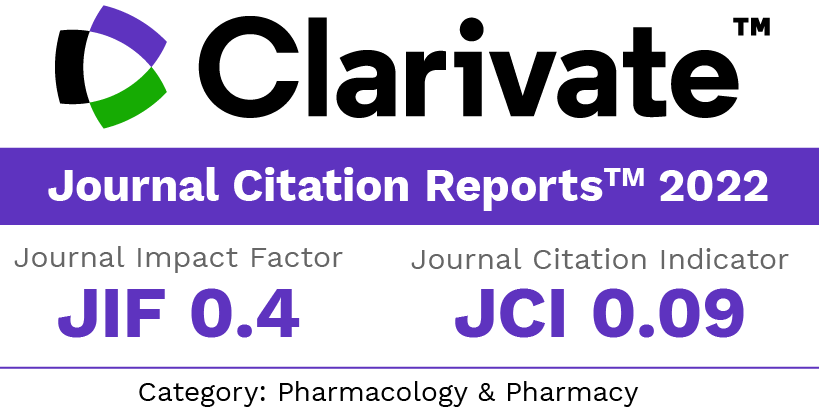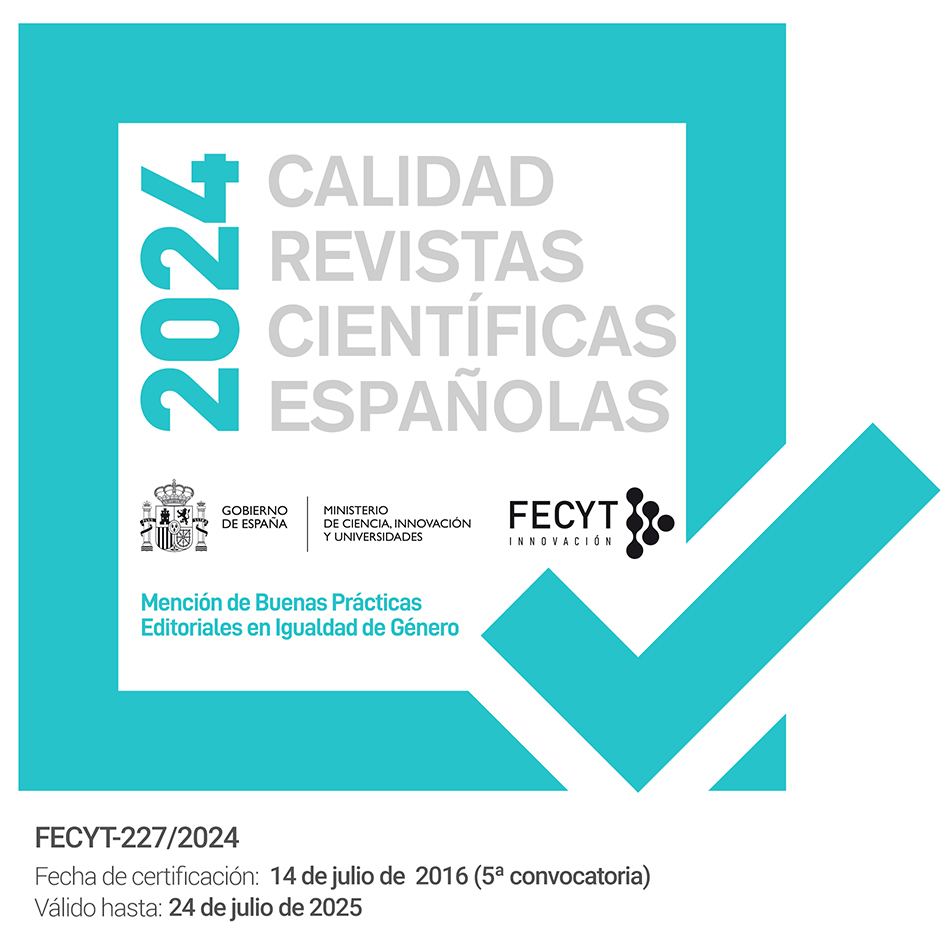Antioxidant activity and polyphenols from seaweed and Halimeda Halimeda Opuntia monile
Keywords:
Seaweed, natural antioxidants, Halimeda opuntia, Halimeda monile, polyphenolAbstract
In this paper, the antioxidant activity displayed by two different green seaweed species (H. opuntia y H. monile) was studied using the β- carotene/ linoleic acid and the DPPH• scavenging.systems as different experimental in vitro antioxidant assessment models. Polar seaweed fractions containing free phenolic acids, soluble esters and insoluble esters of phenolic acids were chemically characterized in terms of their phenolic content and composition. In that direction, 8 phenolic acids were identified and quantified, and salycilic acid was shown to be the majoritary compound on the fractions from both species. In addition, the polar fractions were proved to exert antioxidant activity in the two used experimental systems with considerably low values of CI50. Thus, in view of these findings, the antioxidant activity of these polar Halimeda spp. extracts could be supported and at least partially related to the presence of phenolic acids. In case of Halimeda monile this is, at least to the extend of our knowledge, the first report of such biological activity.Downloads
References
Jiménez-Escrig A, Goñi I. Nutritional evaluation and physiological effects of edible seaweeds. Arch Latinoam Nutr 1999; 49(2): 114-120.
Nuñez R, Garateix A, Laguna A, Fernandez MD, Ortiz E, LLanio M, et al. Caribbean marine biodiversity as a source of new compounds of biomedical interest and others industrial applications. Pharmacologyonline 2006; 3: 111-119.
Rozema J, Bjorn LO, Bornman JF, Gaberscik A, Hader DP, Trost T, et al. The role of UV-B radiation in aquatic and terrestrial ecosystems--an experimental and functional analysis of the evolution of UV-absorbing compounds. J Photochem Photobiol B 2002; 66(1): 2-12.
Vidal A, Motidome M, Mancini-Filho J, Fallarero A, Midori M, Brandao LM, Lapa AJ. Actividad antioxidante y ácidos fenólicos del alga marina Bryothamnion triquetrum (SG Gmelim) Howe. Brazilian J Pharm Sci 2001; 37(3): 373-382.
Kang HS, Chung HY, Kim JY, Son BW, Jung HA, Choi JS. Inhibitory phlorotannins from the edible brown alga Ecklonia stolonifera on total reactive oxygen species (ROS) generation. Arch Pharm Res 2004; 27(2): 194-198.
Yoshie Y, Wang W, Hsieh YP, Suzuki T. Compositional difference of phenolic compounds between two seaweeds, Halimeda spp. J Tokyo University of Fisheries 2002; 88: 21-24.
Gupta MP, Gomez N, Santana AI, Solis PN, Palacios G. Actividad antimicrobiana de algunas algas de la costa atlantica panamena. Rev Med Panama 1991; 16: 64-68.
Ballesteros E, Martin D, Uriz MJ. Biological activity of extracts from some Mediterranean macrophytes. Botancia Marina 1995: 35: 481-485.
Rivera F, Fallarero A, Castañeda O, Dajas F, Manta E, Areces A, et al. Antioxidant activity in vivo and in vitro of Halimeda incrassata aqueous extracts. Cienc Tecnol Aliment Campinas 2003; 23: 256-263.
Fallarero A, Loikkanen JJ, Mannisto PT, Castañeda O, Vidal A. Effects of aqueous extracts of Halimeda incrassata (Ellis) Lamouroux and Bryothamnion triquetrum (S.G.Gmelim) Howe on hydrogen peroxide and methyl mercury-induced oxidative stress in GT1-7 mouse hypothalamic immortalized cells. Phytomedicine 2003; 10(1): 39-47.
Fallarero A, Loikkanen J, Vidal A, Mannisto PT. Evidences for antioxidant and neuroprotective activities exerted by Halimeda incrassata and Bryothamnion triquetrum aqueous extract in GT1-7 immortalized mice hypothalamic cell line. Rev Cub Química 2001; XIII(2): 39.
Linares AF, Loikkanen J, Jorge MF, Soria RB, Novoa AV. Antioxidant and neuroprotective activity of the extract from the seaweed, Halimeda incrassata (Ellis) Lamouroux, against in vitro and in vivo toxicity induced by methyl-mercury. Vet Hum Toxicol 2004; 46(1): 1-5.
Krygier K, Sosulski F, Hogge L. Free, esterified, and insoluble-bound phenolic acids. 1. Extraction and purification procedure. J Agric Food Chem 1982; 30: 330-334.
Swain T, Hillis WT. The phenolic constituents of Prunnus domestica. J Sci Food Agric 1959; 10: 135-144.
Miller HEA. A simplified method for the evaluation of antioxidants. J Am Oil Chem Soc 1971; 48: 91.
Brand-Williams W, Cuvelier ME, Berset C. Use of a free radical method to evaluate antioxidant activity. Lebensm-Wiss U-Tecnol 1995; 28: 25-30.
Nakai M, Kageyama N, Nakahara K, Miki W. Phlorotannins as radical scavengers from the extract of Sargassum ringgoldianum. Mar Biotechnol (NY) 2006; 8(4): 409-14.
Siriwardhana N, Lee K-W, Kim S-H, Ha J-W, Jeon Y-L. Antioxidant activity of Hizikia fusiformis on reactive oxygen species scavenging and lipid peroxidation inhibition. Food Sci Tech Int 2003; 9(5): 339-346.
Iwashima M, Mori J, Ting X, Matsunaga T, Hayashi K, Shinoda D, et al. Antioxidant and Antiviral Activities of Plastoquinones from the Brown Alga Sargassum icracanthum, and a New Chromene Derivative Converted from the Plastoquinones. Biol Pharm Bull 2005; 28(2): 374-377.
Jiménez-Escrig A, Jiménez-Jiménez I, Pulido R, Saura-Calixto F. Antioxidant activity of fresh and processed edible seaweeds. J Sci Food Agric 2001; 81: 530-534.
Rao MV, Paliyath G, Ormrod DP, Murr DP, Watkins CB. lnfluence of Salicylic Acid on H202 Production, Oxidative Stress, and H,O,-Metabolizing Enzymes. Plant Physiol 1997; 11(5): 137-149.
Fukumoto LR, Mazza G. Assessing antioxidant and prooxidant activities of pohenolic compounds. J Agric Food Chem 2000; 48: 3597-3604.
Downloads
Published
How to Cite
Issue
Section
License
The articles, which are published in this journal, are subject to the following terms in relation to the rights of patrimonial or exploitation:
- The authors will keep their copyright and guarantee to the journal the right of first publication of their work, which will be distributed with a Creative Commons BY-NC-SA 4.0 license that allows third parties to reuse the work whenever its author, quote the original source and do not make commercial use of it.
b. The authors may adopt other non-exclusive licensing agreements for the distribution of the published version of the work (e.g., deposit it in an institutional telematic file or publish it in a monographic volume) provided that the original source of its publication is indicated.
c. Authors are allowed and advised to disseminate their work through the Internet (e.g. in institutional repositories or on their website) before and during the submission process, which can produce interesting exchanges and increase citations of the published work. (See The effect of open access).


















